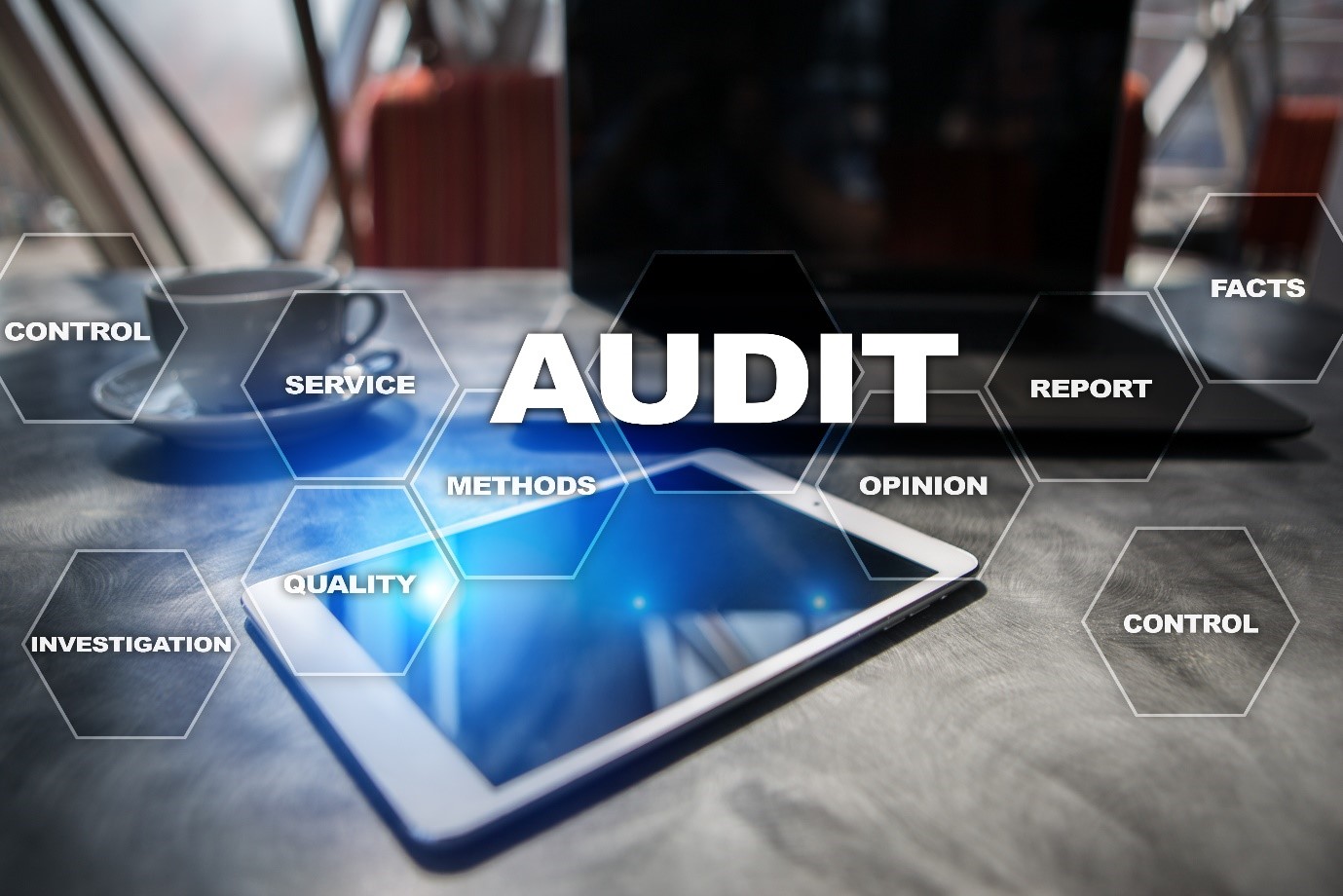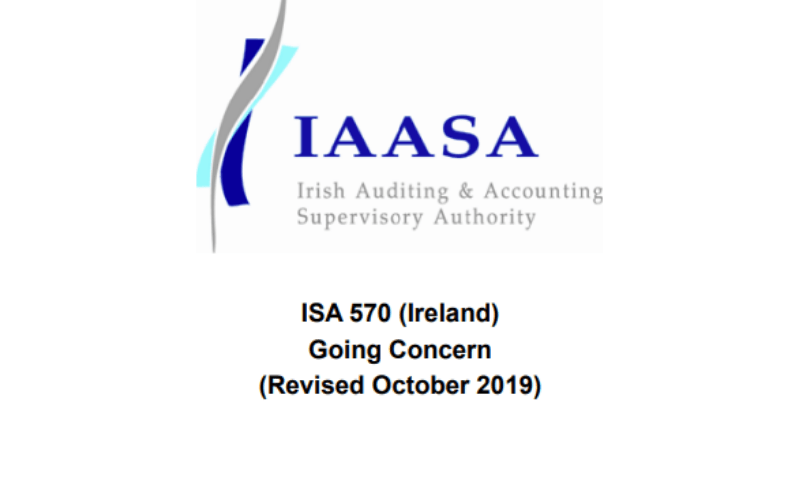
by John McCarthy Consulting Ltd. | Aug 20, 2021 | Blog, News
This is our third and final blog about the results of audit monitoring inspections during the Pandemic.
In Part 2 last week, we looked at going concern (ISA 570), subsequent events (ISA 560) and the lack of financial statement disclosures regarding COVID.
In Part 1 two weeks ago, we looked at stock attendance (ISA 501), fraud (ISA 240) and accounting systems and controls (ISA 315).
Other matters that we have seen on cold file reviews and on recent audit monitoring visits include:
Walk-through testing
Walk through tests that appear on audit files often start from within the client’s accounting system which is the wrong place to start. For walk through tests to be fully effective, they need to commence outside the main system i.e., at the authorisation stage for purchases, at the customer order stage for sales, using clock cards, timesheets and/or employment contracts for wages etc.
Ethical Standards for Auditors
The new IAASA Ethical Standards for Auditors (Ireland) 2020 are effective from 15 July 2021.
Sometimes auditors do not appreciate the implications of certain ethical standards which require appropriate safeguards to mitigate the threats posed. The most common threats we see are Long Association with Audit Engagements (audit partner in place for 10+years) and Provision of Non-Audit Services (especially for the provision of accounting, tax and company secretarial services). Firms are reminded to review the Ethical Standards (Sections 3 and 5 respectively) to ensure they have dealt appropriately with the threats and identified/implemented relevant safeguards. Quite often the only practical safeguard for sole practitioners with a long association problem is to arrange for an annual hot issue or a hot file review (also known as an Engagement Quality Control Review (EQC Review) in year 11 onwards. The implementation of safeguards needs to be properly documented.
It may be possible to apply Provisions Available for Audits of Small Entities (Section 6 PAASE) to deal with threats arising from economic dependence or where tax or accounting services are provided to certain ‘small’ entities, as defined in Section 6. Where PAASE is applied, two matters arise:
- the auditors’ report must disclose this fact and
- either the financial statements notes or the auditors’ report must include the relevant disclosures specified in ES PAASE para 6.15(b).
Small Companies Exemption Incorrectly Claimed – Schedule 5 Companies Act 2014
A reminder that entities listed in Schedule 5, Companies Act 2014 are deemed ‘large’ and often include entities regulated by the Central Bank of Ireland (e.g., ‘insurance intermediaries’). Please note that such entities cannot:
- Use FRS 102 Section 1A (which is only for certain ‘small’ entities;
- Use the Provisions Available for Audits of Small Entities;
- Avail of small companies’ audit exemption; and
- File abridged financial statements with the CRO.
Such companies must also produce a Statement of Cash Flows and disclose the remuneration of their auditors in four stated categories (for the current/prior years) for:
- audit of the company/group;
- other assurance services;
- tax advisory services; and
- other non-audit services.
For bespoke training on any of the topics mentioned here, please see our website.

by John McCarthy Consulting Ltd. | Aug 13, 2021 | Blog, News
This is Part 2 of our series of three blogs about the impact that the Coronavirus (COVID-19) is having on evidencing of audit work.
In Part 1 last week, we looked at issues like stock attendance (ISA 501), fraud (ISA 240) and accounting systems and controls (ISA 315). Here are some other problem areas seen during recent audit monitoring inspections.
Going concern (ISA 570)
Going concern has always been a key audit area and remains so, particularly at the moment. Monitoring inspectors often see excellent examples of audit work on going concern including consideration of worst case scenarios when assessing forecasts, and good documentation of the thought processes supporting the auditor’s conclusions on this topic. This will include evidence of scepticism and challenge of management’s assumptions.
In other cases with less than ideal inspection outcomes, audit work on going concern may have been carried out but inadequately documented, or in some cases insufficient audit work on going concern is performed. Areas giving rise to findings on monitoring visits include lack of, or insufficient challenge and assessment of management assumptions or the lack of alternative audit procedures on the audit file, where for example formal future cash flow forecasts are not prepared, particularly on smaller clients. These need to be on file for a period of at least 12 months from the date of sign-off of the financial statements.
Please remember ISA 570 (Revised) (effective for audits of financial statements for periods commencing on or after 15 December 2019) contains increased requirements in relation to audit work on going concern.
Subsequent events (ISA 560)
Inspectors also see cases where there has been a delay in signing some financial statements due to the Pandemic. Don’t forget to ensure that appropriate subsequent events procedures are performed up to the date of the auditor’s report in such circumstances. This should include details of the date/time/place and names of those attending the final close off meeting, even if this s a brief 5-minute phone call. The notes should also contain details of action points agreed and matters forward to the next audit.
Financial Statement disclosures – COVID
There are often comprehensive disclosure in financial statements regarding the impact of COVID. Unfortunately in other cases, there are only brief or no disclosures.
Even where the directors consider COVID has had no impact on the entity, it may still be appropriate to include disclosure in the financial statements to that effect. Disclosure should be sufficient to enable the reader of the financial statements to understand why the directors believe this to be the case. Information disclosed in the directors’ report must be consistent with the information disclosed in the financial statements.
See the final Part 3 of this blog next week.

by John McCarthy Consulting Ltd. | Oct 29, 2019 | Blog, News
The UK audit regulator has revealed that among the key reasons for launching an investigation into the collapse of Thomas Cook were ‘issues around going concern and goodwill impairment.’
As if on cue, the Irish audit regulator IAASA, has just issued (October 2019) a revision to the audit standard on Going Concern, called ISA 570. This comes into effect for audits of accounting periods that commence on or after 15 December 2019.
The revised standard on Going Concern in Ireland will trigger additional audit work and evidence gathering for auditors in the following areas:
- greater work on the part of the auditor to more robustly challenge management’s assessment of going concern;
- thoroughly test the adequacy of the supporting evidence;
- evaluate the risk of management bias;
- make greater use of the viability statement;
- improved transparency with a new reporting requirement for the auditor of public companies, listed and large private companies to provide a clear, positive conclusion on whether management’s assessment is appropriate;
- to set out the work they have done in this respect; and
- a stand back requirement to consider all of the evidence obtained, whether corroborative or contradictory, when the auditor draws their conclusions on going concern.
This standard arrives at a very important time, in the midst of serious questions being raised about recent corporate collapses in the UK such as the travel company Thomas Cook, BHS and Carillion.
The ongoing FRC investigation into EY’s audit of the financial statements of Thomas Cook Group has raised questions about the sufficiency of the challenge auditors applied to management’s assumptions about going concern and goodwill, and the sufficiency of the audit evidence to support the work that was done.
Answering questions from the UK Business, Energy and Industrial Strategy (BEIS) committee, the FRC director of enforcement, Elizabeth Barrett, told UK MPs that there was sufficient information about potential issues within the audit to merit an investigation.
When asked to specify those concerns, Barrett replied ‘broadly speaking, in particular issues around going concern and goodwill impairment.’
While Thomas Cook had reported impairments to goodwill in 2011, there had been no further reporting on this until 2019, when £1.1bn was written down.
The UK audit regulator (FRC) has also amended the audit standards on going concern and goodwill impairment in recent times.
Support material
For more on best practice in Audit , see our up to date webinar here.

by John McCarthy Consulting Ltd. | Oct 11, 2017 | News
Readers may have heard by now that there is a new audit reporting requirement about going concern contained in a new style of audit opinion. For companies and credit unions with a reporting period commencing on or after 17 June 2016 (in effect 30 June 2017 year-ends onwards), auditors must now include a specific conclusion in the auditor’s report on going concern.
This change happened in June 2016, when IAASA (the Irish Auditing and Accounting Supervisory Authority) took over the setting of auditing standards for Ireland. Subsequently in January 2017, IAASA issued a new single Ethics Standard and a new ISQC1. It also published a new suite of ISAs (Ireland), including the International Standard on Auditing (ISA) 700 (Ireland) on ‘Forming an Opinion and Reporting on Financial Statements’ and ISA 570 on ‘Going Concern’ which were both updated.
The new audit report significantly places the audit opinion at the beginning of the report and the Bannerman paragraph, is placed last of all. Locating the audit opinion paragraph at the beginning is a plus, as it is more likely to be read now than in the past.
However, one potentially unfortunate side effect of the new style report could lead to misunderstandings. The use of sentences with double-negatives, could cause confusion. In the old-style audit report, any special mention of going concern was only given in the event where there was a concern (such as in an Emphasis of Matter paragraph). Now there is a direct reference to going concern, but using double negatives. Here is the wording:
‘Conclusions relating to going concern
We have nothing to report in respect of the following matters in relation to which the ISAs (Ireland) require us to report to you where:
- the directors’ use of the going concern basis of accounting in the preparation of the financial statements is not appropriate; or
- the directors have not disclosed in the financial statements any identified material uncertainties that may cast significant doubt about the company’s ability to continue to adopt the going concern basis of accounting for a period of at least twelve months from the date when the financial statements are authorised for issue.’
Situations could easily arise where the page break, coming between the opening text and the first bullet point or a page break between the first and second bullet point, could confuse readers who see the words ‘the directors have not disclosed….’. If readers do not take their time to read the audit report carefully, there could be misunderstandings with unfortunate consequences.
It’s worth mentioning this, in advance, to clients and other users like financial lenders, sooner rather than later as they could be taken aback by this style of language and especially the specific reference to going concern.
To hear more about the latest style of audit report and the latest interesting changes to the auditing profession, come to our next Audit Update course on 4 December 2017.
Further details here.









